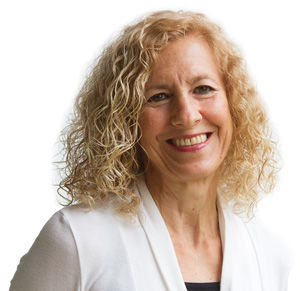Firestone cookbook is also delightful memoir
Published November 13, 2007
“Food is an enormous connector, connecting family and friends. Food is its own language.”
So began my conversation with Dorothy Firestone, former food columnist for the St. Louis Jewish Light and, most recently, author of the self-published Tabletalk, available at local bookstores and on Amazon.com. Dorothy’s goal was to create a book that was part memoir and part “user-friendly” cookbook.
ADVERTISEMENT
She has succeeded. Included in the book are many of Dorothy’s delightful “Tabletalk” columns and memoirs of her travels across the world with her husband, Billy. The recipes are straight-forward and easy to follow. As readers of her columns may have surmised, Dorothy judges recipes for clarity, simplicity, and unpretentiousness. She used those guidelines in selecting the recipes for her book. As she says, “the recipes I’ve included in the book are real recipes for real people and for food to feed real families.”
Dorothy reminisced with me about her early cooking. Her interest in cooking began shortly after her marriage, 57 years ago, to Billy Firestone. “My mother had tried, unsuccessfully, to teach me how to cook. I told her that I would learn only when I needed to, once I got married.”
The first cookbook she bought was Joy of Cooking and her second cookbook was Thoughts for Buffets. She still uses both of them.
One of the first things she ever cooked was a turkey.
“It was beautiful,” she said. “I didn’t want to have to cut into it!” She had been married only a month.
Baking was something she enjoyed from the beginning. Her first attempt was to bake her grandmother’s poppy seed cookies.
Unfortunately, her grandmother didn’t cook from a recipe, and thus she could only give Dorothy a list of some of the ingredients. Little did Dorothy know that by using six eggs she would need to add lots and lots and lots of flour, which would yield lots and lots and lots of cookies!
ADVERTISEMENT
When her family was young, Dorothy’s repertoire of meals changed from week to week, “depending on what I felt like cooking.” Back then, she planned her menus at the beginning of each week. Her family appreciated her efforts, and often ended a meal by asking, “Is this all you’ve got?” or “What’s for dinner tomorrow night?” She said that her kids weren’t picky eaters, “though we made them eat their greens. Even though this rule is contrary to popular child-rearing theory, our kids all love vegetables!”
Dorothy enjoys entertaining and creating special party menus.
“I still get very nervous about entertaining,” she told me. “I have a scotch an hour before my guests arrive. I want everything to look good and taste good. I want it to be perfect.”
She often serves a salad at the end of the main course, “European style, because I want my main course to be eaten fresh from the stove or oven. Timing is important.”
She often prepares desserts in individual dishes because she likes how elegant they look on the table. And, she is always willing to share recipes with guests, “but only after the meal.”
Dorothy’s guests often tell her that they are afraid to invite her to dinner for fear of not being able to match her skill. “I love to eat at someone else’s home,” she says, “regardless of what they serve. It’s such a pleasure to eat out, and it’s such a loving and giving thing. Everyone can cook for me.”
I asked Dorothy to share some of her favorite cooking implements and techniques. “I love cast iron skillets and enameled iron pots,” she told me as I took careful notes. “They can be used at very high heat and very little sticks to them. I cut terrycloth beach towels in half and use them to dry my salad greens and vegetables before cooking. I use a rubber garlic tube to remove the peel from garlic and a meat mallet to crush my garlic. One good paring knife is an absolute. I use a large Silpat (a pad made of fiberglass and silicone which may also be used for non-stick baking) for rolling my pastries and kneading my breads. I purchase olive oil by the gallon and love using good wine vinegars. And, of course, I cook with lots of garlic and bake with real butter.”
Dorothy and Billy Firestone will be hosting Thanksgiving this year for their family. “We’ll do the turkey and the stuffing and everyone else will bring a dish to share. We always have the same things, always prepared exactly the same way.” Below is the recipe for Dorothy’s delicious stuffing, for which she recommends using only fresh sage.
Sage And Onion Casserole
Serves 4-6
1/2 pound ground raw turkey breast
2 tablespoons extra virgin olive oil, divided
1 pound yellow onions, finely chopped
1 egg
1 cup chicken broth
10 fresh sage leaves finely chopped (about 1 tablespoon)
2 cups fresh whole wheat or white coarse breadcrumbs made from dense bread
1 teaspoon kosher salt
1/2 teaspoon freshly ground pepper
6 tablespoons slivered almonds, divided
1. Preheat the oven to 350 degrees. Grease a 1 1/2-quart baking dish
2. Saut é the turkey in 1 tablespoon oil. When it has lost its raw look and is starting to brown, remove it from the pan and set aside.
3. Add the remaining oil to same pan and saut é the onions until they are soft.
4. In a large bowl, beat the egg. Add the meat, onions, broth, sage, breadcrumbs, salt, pepper and 1/4 cup almonds.
5. Put the mixture in the prepared baking dish and sprinkle with the remaining almonds. Bake 40 minutes or until it starts to brown.
Note: To insure a well-seasoned stuffing before baking it, saut é a tablespoon or so in a skillet. Taste and add salt, pepper or more chopped sage leaves, as necessary.















